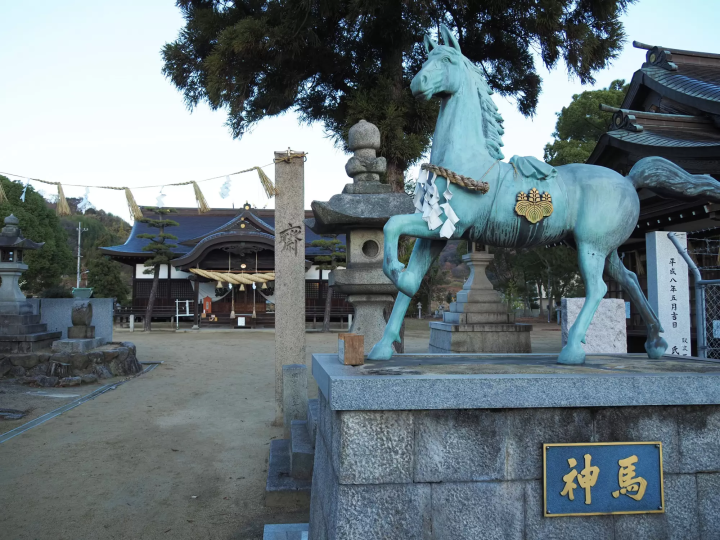[Kurashiki] A luxurious stroll through the illuminated streets of Kurashiki at night
![[Kurashiki] A luxurious stroll through the illuminated streets of Kurashiki at night](https://resources.matcha-jp.com/resize/720x2000/2025/06/24-237303.webp)
The night view of Kurashiki's Bikan Historical Quarter, with its beautifully maintained streets, is enveloped in a fantastic atmosphere that is different from the daytime, making it the perfect place to spend a relaxing time. Gold-Guide will introduce a model course for a night stroll that guests can enjoy.
Gold-Guide is a guide matching platform operated by JR West Communications Co., Ltd., which matches tourists visiting Japan with highly skilled interpreter guides and provides guided tours. In this article, Gold-Guide, which has a track record of guiding tours in various areas of Japan, will introduce how to enjoy Kurashiki's Bikan Historical Quarter.
-
Table of Contents
- 1. What is Kurashiki Bikan Historical Quarter?
- 2. History, industry and culture of the Bikan Historical Area
- 3. Highlights of Kurashiki's Bikan Historical Quarter
- ①Ohara Museum of Art
- ②Katariza Ohara House (Former the Ohara family residence)
- ③Kurashiki Archaeological Museum
- ④ Hayashi Genjuro Shoten
- ⑤Kurashiki Story Museum
- ⑥Ohashi Family Residence
- ⑦Inoue family residence
- ⑧Ivy Square
- 4. How to get to Kurashiki Bikan Historical Quarter
- 5. Bikan Historical Quarter at Night, Recommended by Gold-Guide Guides
- Around 18:00 | Move from Kurashiki Station to the Bikan Historical Quarter (about 15 minutes on foot)
- 18:30 Dinner
- 19:30 | Nighttime stroll around the city: Kurashikikan (Tourist Information Center)
- A stroll through the city at night: Buildings illuminated by the riverside lights
- Night Cafe
- Ivy Square
- In front of Ohara Museum of Art
- 20:15 | Take a break at a cafe or bar
- 21:00|End of walk and head to accommodation
1. What is Kurashiki Bikan Historical Quarter?
Located in Kurashiki City, Okayama Prefecture, this area features beautifully preserved historic streets lined with white-walled storehouses and townhouses dating back to the Edo period (17th to mid-19th centuries), creating a landscape brimming with atmosphere. The Kurashiki River, which runs through the center of the area, is dotted with willow trees swaying in the wind, and visitors are enchanted by the sight of boats floating down the river. The area is also home to the Ohara Museum of Art, Japan's first private art museum focusing on Western art, as well as shops selling local crafts and quaint cafes, making it an attractive tourist destination where culture, history, and modern sensibilities come together in harmony.
![[Kurashiki] A luxurious stroll through the illuminated streets of Kurashiki at night](https://resources.matcha-jp.com/resize/720x2000/2025/06/30-237713.webp)
2. History, industry and culture of the Bikan Historical Area
Kurashiki Bikan Historical Quarter is a place where history, industry, and culture blend beautifully together, making you feel as if you are traveling back in time. Its origins were shaped by a long history that has woven together the natural topography and the activities of people.
In 1642, Kurashiki came under the direct control of the shogunate and rapidly developed as a distribution center for goods. People used the Kurashiki River as a canal, lining merchants' storehouses and residences along the riverside, which thrived as a commercial center. Around 1800, successful merchants emerged, and they built townhouses and storehouses to showcase their wealth. These buildings became the prototypes for the current Bikan Historical Quarter's landscape. The buildings, featuring unique designs such as white walls with black namako walls, Kurashiki latticework, and Kurashiki windows, continue to convey the historic beauty to the present day.
In the second half of the 1800s, Kurashiki experienced significant development as a base for the textile industry. In 1889, a spinning mill (now KURABO INDUSTRIES LTD.) was established, and a modern factory using the latest British-style machinery began operation. The success of this spinning industry gave rise to businessman Ohara Magosaburo. He donated his wealth to social and cultural projects. Also, he constructed a succession of Western-style buildings, including the Ohara Museum of Art, a post office, a bank, and a hospital. These buildings blend in with the Edo-period (17th to the mid-19th centuries) townscape, creating a retro-modern landscape.
In the 1900s, momentum for preserving the townscape grew, and thanks to the efforts of local citizens and cultural figures to protect Kurashiki's townscape, this area has now become a cultural tourist destination visited by many tourists from both Japan and abroad.
![[Kurashiki] A luxurious stroll through the illuminated streets of Kurashiki at night](https://resources.matcha-jp.com/resize/720x2000/2025/06/30-237715.webp)
3. Highlights of Kurashiki's Bikan Historical Quarter
Kurashiki Bikan Historical Quarter is a town nurtured by the blessings of nature, the wisdom of the people, and a deep love for culture. It's a place where 400 years of history speak to you quietly just by walking through it. It's a fun place to stroll around, but we'd like to introduce some recommended places in Kurashiki Bikan Historical Quarter for first-time visitors.
①Ohara Museum of Art
The Birth of the Ohara Museum of Art
Located in the heart of Kurashiki's Bikan Historical Quarter, the Ohara Museum of Art is known as the first private art museum in Japan to exhibit Western art in earnest. It was founded in 1930 when painter Torajiro Kojima expressed a strong desire to make "authentic Western paintings available to the public in Japan," and businessman Magosaburo Ohara agreed. The friendship and passion of the two men are the foundation of this museum. The Ohara Museum of Art is not just a place to appreciate artworks, but also a place where you can experience the stories and people's thoughts behind the art. When visiting Kurashiki, be sure to take your time and thoroughly explore the museum. You're sure to find something that will stay in your memory.
![[Kurashiki] A luxurious stroll through the illuminated streets of Kurashiki at night](https://resources.matcha-jp.com/resize/720x2000/2025/06/30-237717.webp)
Main Building
The main building of the museum features a majestic exterior reminiscent of a Roman temple. Once inside, you'll find an open atrium with a sense of openness, where the modern interior and historical structure are beautifully combined. Inside the museum, you'll find a wide range of world-renowned artworks, including El Greco's "The Annunciation," Monet's "Water Lilies," and Gauguin's "Fragrant Earth." These were purchased directly from Europe by Torajiro Kojima, and their existence in Japan is said to be a miracle in itself. In addition to Western paintings, the Ohara Museum of Art also focuses on contemporary art, with works by innovative artists such as Yayoi Kusama and Marcel Duchamp on display. As a place where you can experience the diversity of art, it is popular with a wide range of people, from beginners to enthusiasts.
Crafts and Oriental Art Museum, Torajiro Kojima Memorial Museum, and Annex
In addition to the main building, the museum features the Crafts and Oriental Art Gallery, the Torajiro Kojima Memorial Museum, and an annex (currently closed), each showcasing works with distinct themes. The Crafts and Oriental Art Gallery is a Japanese-style building with an impressive storehouse with white and red walls. There is also a museum shop inside the building where you can purchase art-related goods and books.
Opening hours
Hours vary depending on the season, from March to November 9:00-17:00 (final entry 16:30), and from December to February 9:00-15:00 (final entry 14:30). Closed on Mondays, but will be open if Monday falls on a public holiday.
The Ohara Museum of Art is not just a place to appreciate artworks, but also a place where you can experience the stories and thoughts of the people behind the art. When visiting Kurashiki, be sure to take your time and explore the museum. You're sure to find something that will stay in your memory.
②Katariza Ohara House (Former the Ohara family residence)
Located in the heart of Kurashiki's Bikan Historical Quarter, the "Katariza Ohara House (Former Ohara Residence)" was built in 1795 and has been the home of the Ohara family's heads for many generations. It is currently designated as an Important Cultural Property of Japan, and is not just a historical building, but still lives on as a "living cultural property." The site is approximately 2,100 m², which is larger than you might imagine from the outside. The row of storehouses along the cobblestone road and the tranquil Japanese garden make you feel as if there is another Kurashiki within Kurashiki. Inside the house, precious items that have been passed down through the generations of the Ohara family are on display, allowing you to learn about the history of the Ohara family, who have contributed significantly to the development of industry and culture in Kurashiki. The exhibits are not limited to traditional items, but also incorporate modern installations such as "Falling Words" and "Cube Trees," creating a space where the past and present seem to be in dialogue with each other.
![[Kurashiki] A luxurious stroll through the illuminated streets of Kurashiki at night](https://resources.matcha-jp.com/resize/720x2000/2025/06/30-237721.webp)
What is Kataraiza?
The Kataraiza does not simply refer to a place for conversation, but also plays the role of a "catalyst" for talking about the present and the future. The house also has a book cafe where you can enjoy original coffee surrounded by the Ohara family's collection of books. The detached tatami room also serves matcha tea, making it the perfect place to spend some quiet time. Furthermore, photography is permitted inside the building, allowing visitors to record and share their perspective of this space.
Opening hours
9:00-17:00 (last entry 16:30), closed on Mondays and during the New Year holidays. Admission is 500 yen for adults and 400 yen for high school students and younger, with group discounts available.
At night, the lattice windows and white walls are illuminated, evoking a sense of the building's history.
③Kurashiki Archaeological Museum
Kurashiki Archaeological Museum opened in 1950 after renovating a rice storehouse built during the Edo period (17th to mid-19th centuries). It is small, but it has a rich history. The storehouse's solid white walls and black roof tiles blend into the landscape of the scenic area, giving it an appearance as if it is preserving the memories of the past. What is particularly noteworthy about this museum is that it focuses on archaeological research and exhibits of the area known as "Ancient Kibi." The Kibi region is a vast area that spans the entirety of present-day Okayama Prefecture and the eastern part of Hiroshima Prefecture. It is one of the most important cultural areas in ancient Japan. This area is home to many ruins that are essential to discussing ancient history, such as shell mounds, Yayoi period (10th century BC to 3rd century AD) burial mounds, and large burial mounds. The Kurashiki Archaeological Museum has been conducting excavation surveys and research in this area for over 70 years, carefully displaying the results of its findings. Inside the museum, excavated items such as earthenware, stone tools, and ornaments are displayed, and each exhibit is accompanied by an explanation that offers a glimpse into the lives, beliefs, and technologies of ancient people. The exhibits are by no means flashy, but they have a quiet, telling power.
![[Kurashiki] A luxurious stroll through the illuminated streets of Kurashiki at night](https://resources.matcha-jp.com/resize/720x2000/2025/06/30-237724.webp)
The building itself is one of the highlights, and the design incorporates a rice storehouse from approximately 200 years ago, preserving the storehouse's original structure while also utilizing it as an exhibition space. When you step inside the storehouse, you'll be enveloped in the cool air and the feeling that time is passing slowly.
Opening hours
IIt is only open on Fridays, Saturdays, Sundays, and holidays, from 10:00 to 15:00. It is closed from Mondays to Thursdays, so please check in advance if you plan to visit. Admission is 500 yen for adults, 400 yen for university and high school students, and 300 yen for junior high and elementary school students, making it an affordable place to stop by.
The Kurashiki Archaeological Museum is situated in the vibrant streets of the Bikan Historical Quarter and is a place that quietly conveys the depth of its history. It is a special space where you can feel the "depth of time" that the city of Kurashiki has by stopping by during a break from sightseeing.
④ Hayashi Genjuro Shoten
Hayashi Genjuro Shoten has a particularly unique presence in Kurashiki's Bikan Historical Quarter. The building was originally the head office of Hayashi Yakuhin, a drug store that has been in business since 1657, and was reopened in 2012 as a complex with the theme of "food, clothing, and shelter ." Hayashi Genjuro was a businessman and also known as a devout Christian. While taking over the family pharmacy, he also worked hard to develop local medical care and social welfare, greatly influencing the development of Kurashiki. Today's Hayashi Genjuro Shoten has inherited his spirit and has been reborn as a place that proposes "a rich life."
The building is a beautiful townhouse with white walls and wooden beams, and while its exterior blends in with the scenery of the Bikan Historical Quarter, it also exudes a somewhat modern atmosphere. Each store values "Kurashiki-ness" and stocks products that utilize local materials and techniques. On the second floor is the "Hayashi Genjuro Shoten Memorial Room," where valuable items handed down through the Hayashi family, such as medicine chests, old noren curtains, and account books, are on display. In addition, there is an observation deck on the third floor, from which you can get a panoramic view of the Bikan Historical Quarter. As you gaze out at the view of the rows of tiled roofs, you will be able to quietly sense the significance of this place, which connects Kurashiki's history with the present.
Opening times
Business hours are 10:00-18:00, closed on Mondays (open on public holidays but closed the following day).
Hayashi Genjuro Shoten is a place that treasures the good old things while also proposing ways to fit into modern life. It is a special space where the "present" and "past" of Kurashiki meet.
⑤Kurashiki Story Museum
Located at the entrance to Kurashiki Bikan Historical Quarter, Kurashiki Monogatarikan is a popular facility that utilizes a historical building as a place of interaction between tourists and local residents. The building is a townhouse built between the late 17th century and the late 18th century, and the Nagayamon gate, storehouse, and alleys still convey the atmosphere of that time. The contrast between the white walls and black roof tiles is beautiful , making it a space that truly symbolizes "Kurashiki-ness." At night, the courtyard is beautifully lit, making it the perfect place to spend some quiet time. The Monogatarikan opened in 2009 and was reborn after partial renovation of the former Higashiohashi family home. The building has an exhibition room, a Japanese-style room, a multipurpose hall, and a meeting room, and is used as a base for tourist information, cultural events, and local activities.
exhibition
In the exhibition room, there are exhibits introducing the local culture and festivals , such as documents related to Kurashiki City's Japan Heritage, a model of the Achi Shrine's autumn festival, and a mask of a Suinkyo. In particular, the model of the sacred procession made of washi paper is carefully reproduced down to the smallest detail, and conveys the dynamism of the festival.
The "Kurashiki Bird's-Eye Map" by Kurashiki-born artist Naoki Okamoto is also on display, and by comparing the 1963 and 2005 versions, you can visually enjoy the changes in the town. Local people can be seen reminiscing about things that used to be here, and the museum also serves as a place to share memories of Kurashiki.
A place to relax
The facility's courtyard has benches and a café, making it a popular place to take a break during walks around town. Barrier-free toilets and a nursing space are also available, making it a safe and secure environment for everyone to use. The rental rooms are open not only to local residents, but also to tourists and event organizers, and are used for a variety of purposes, including piano recitals, exhibitions, and matchmaking events.
Opening hours
Opening hours vary depending on the season, from April to November 9:00-21:00 (entry until 20:45), and from December to March 9:00-19:00 (entry until 18:45). The museum is closed during the New Year holidays (December 29th to January 3rd). Admission is free, making it an attractive place for anyone to drop in.
⑥Ohashi Family Residence
The Ohashi Family Residence was built in the 1790s as the residence of the wealthy Ohashi family merchants, and is now designated as an Important Cultural Property of Japan . Its stately townhouse architecture is a valuable cultural heritage that conveys the history and prestige of Kurashiki to the present day. The ancestors of the Ohashi family were samurai who served the Toyotomi clan. After the fall of Osaka Castle, they moved from Kyoto and settled in Kurashiki around 1705. They developed rice paddies and salt fields, worked in the financial industry, and became wealthy merchants to the point of serving as village headman of Kurashiki village at the end of the Edo period. In particular, during the Tenpo famine, they donated 1,000 ryo of gold (approximately 100 million yen in today's value) to the shogunate, and were allowed to use their family name and carry a sword, making their wealth and social status unparalleled. The building consists of four buildings: the main house, the Nagayamon gate, the rice storehouse, and the internal structure. After passing through the Nagayamon gate facing the main road, you will find the main house across the front yard. This layout would not have been permitted in an ordinary town house , and the fact that it was built with special permission from the Kurashiki Magistrate's Office shows the high status of the Ohashi family.
![[Kurashiki] A luxurious stroll through the illuminated streets of Kurashiki at night](https://resources.matcha-jp.com/resize/720x2000/2025/06/30-237725.webp)
architecture
The architectural style is hipped roof style, with real tile roofing. There are rooms and storerooms in the attic, making for a multi-story structure. Locally grown pine, zelkova and cedar were used as materials, and the house is simple yet carefully finished. Design elements unique to Kurashiki townhouses , such as "Kurashiki lattice," "Kurashiki windows" and "Namako walls," can be seen throughout the house, making it a sight to behold as architectural beauty. The tour route takes you around the "Ue-no-ma" room, where guests were entertained, the master's study, living room and kitchen. There is also a large, deep Bizen ware bowl in the courtyard to collect rainwater, which apparently also served as a fire-fighting water tank. The design, which paid attention to even the smallest details, gives a sense of the wisdom and aesthetic sense of life at the time.
Opening hours
The museum is open every day from 9:00 to 17:00, and admission is 550 yen for adults, with discounts for seniors and students. Staff are available to guide visitors through the museum, allowing you to learn more about the charms of the building.
The Ohashi Family House is a symbol of the preservation of Kurashiki's townscape. Its dignified appearance and the sense of beauty in every detail quietly speak to visitors of the depth of Kurashiki's history and culture. At night, the stately wooden building is lit up, giving a real sense of its depth of history.
⑦Inoue family residence
The Inoue Family Residence is the oldest townhouse in Kurashiki's Bikan Historical Quarter. Built in 1721, this building is a valuable cultural asset that conveys the lifestyle of merchants and the streetscape of the Edo period, and is registered as a Kurashiki City designated cultural asset . The Inoue family has been drug dealers since the Edo period, and have taken the name Saburoemon for generations. Located in this area near the Kurashiki River, the family has been deeply involved in the local economy and culture while selling and manufacturing medicines. After 10 years of restoration work, the building has been restored to its appearance from 1830 to 1844, when the family was at the height of its prosperity. The restoration faithfully reproduced the techniques of the carpenters and joiners of the time, preserving the atmosphere of those times.
architectural beauty
The first thing that catches your eye is the "Kurashiki window," a feature unique to Kurashiki. This is a window with an earthen door for fire prevention, and the Inoue family home is said to be the only one still standing. Within the house, there are spaces that seem as if each one tells a story, such as a small garden with a snow-viewing lantern, a hearth dedicated to the god of fire, a tatami room and tea room connected by an arched bridge, cedar doors with pictures revealed by infrared photography, and sliding doors covered with calligraphy by Fujii Chikugai. The ceilings are decorated with elegant ridged and wickerwork ceilings, making them a sight to behold as architectural beauty. Furthermore, inside the building, there are exhibits introducing the restoration process and traditional techniques, and explanatory videos are also shown. More than just an "old house," the house serves as a "living museum" where you can learn about history and experience culture.
Opening hours
10:00-17:00 (last entry 16:30), closed on Mondays (open on national holidays and closed the following day). Admission is 500 yen for adults and 300 yen for high school students and younger.
If you visit the Kurashiki Bikan Historical Quarter, this is one spot you should definitely visit. At night, the lighting highlights the beauty of the structure.
⑧Ivy Square
In the center of Kurashiki's Bikan Historical Quarter, there is a striking red brick building . The former Kurashiki Spinning Mill, founded in 1888, closed its doors as a factory and was converted into a tourist facility called "Ivy Square" in 1974, housing a hotel, a memorial hall, and experience facilities. It has been reborn as a hotel with a natural interior that exudes the warmth of wood. The exterior, with ivy entwined around the red brick walls, changes its appearance with each season, captivating all who visit. It was certified as a "Modern Industrial Heritage" in 2007, and is a spot of great historical value. Inside the facility is a hotel with a natural interior that exudes the warmth of wood. There is a pond in the courtyard, a tranquil space where Nishikigoi carp swim.
![[Kurashiki] A luxurious stroll through the illuminated streets of Kurashiki at night](https://resources.matcha-jp.com/resize/720x2000/2025/06/30-237726.webp)
Kurabo Memorial Museum
The Kurabo Memorial Museum displays the history of the spinning industry from the Meiji to Reiwa eras. It was built by renovating a raw cotton warehouse. Through the machinery and materials, you can learn about the background of Kurashiki's development. If you arrive at the scenic area a little early, be sure to check it out. Opening hours: 9:00-17:00 (last entry 16:45) Admission fee: 300 yen for adults, 250 yen for students (free for guests staying overnight)
Aimi Kobo
At "Aibi Kobo," you can experience painting Bizen ware and using an electric potter's wheel. It's a fun experience even for beginners, and you can create a perfect piece to remember your trip by.
Restaurant "Tsuta"
There is a restaurant called "Tsuta" in the facility, where you can enjoy dishes made with seasonal ingredients from the Seto Inland Sea. You can enjoy Japanese and Western menus in a classical atmosphere. Breakfast 7:00-9:30 Lunch [Western food] 11:00-14:30 [Japanese food] 11:30-14:00 Dinner 17:00-21:00 (order stop at 20:30) Tea time 9:30-21:00 (order stop at 20:30)
Public Bar "Akarenga"
In the evening, a public bar called "Akarenga" opens. In the retro semi-basement space, you can relax with a glass of Western alcohol. Bar hours: 20:00-23:30 (last orders 23:00) Closed: Tuesdays, 2nd Wednesdays, and other irregular days
shop
There is also a shop selling Kurashiki and Okayama's famous sweets, crafts, and folk crafts. There are also many items that can only be purchased here, such as denim products and local wine. This shop is also open until 4:00 pm (weekdays) / 5:00 pm (Saturdays and Sundays), so be sure to come early.
4. How to get to Kurashiki Bikan Historical Quarter
Shinkansen - Conventional trains
Kyoto Station ~ (Shinkansen) ~ Okayama Station approx. 1 hour
Okayama Station - (conventional line) Kurashiki Station approx. 17 mins. 10 mins walk from the station
From the airport by car or bus
From Okayama Momotaro Airport to Kurashiki Station by bus (approx. 35 mins) or 10 mins walk from the station
About 35 minutes from Okayama Momotaro Airport to the Bikan Historical Quarter
5. Bikan Historical Quarter at Night, Recommended by Gold-Guide Guides
The illuminated streets are enveloped in a fantastical atmosphere that is different from daytime, making it the perfect place to spend some leisurely time. Here is a recommended course that can be easily toured in 2-3 hours, including dinner.
Around 18:00 | Move from Kurashiki Station to the Bikan Historical Quarter (about 15 minutes on foot)
To get to the Bikan Historical Quarter, leave from the South Exit of Kurashiki Station. You will see a street called "Kurashiki Chuo Dori" in front of you, so walk to the left and when you see "Kurashiki Kokusai Hotel", turn left at the next stop. Head east from the west side of the Ohara Museum of Art's grounds. Another way to get there is to walk from the South Exit of Kurashiki towards the white building of Tenmaya Department Store, and when you find the entrance to the shopping street on your right, cross the road. The retro-style arcade starts from "Kurashiki Ekimae Shopping Street", continues to "Ebisu Dori Shopping Street" and "Honmachi Street", and after about 15 minutes of walking, you will arrive at the Bikan Historical Quarter. If you plan to stay overnight, it's best to leave your luggage at your accommodation before heading there. If you arrive at dusk, it's just when the lights start to come up. The willow-lined streets and white-walled storehouses are illuminated in soft light, creating a fantastical landscape.
![[Kurashiki] A luxurious stroll through the illuminated streets of Kurashiki at night](https://resources.matcha-jp.com/resize/720x2000/2025/06/23-237132.webp)
18:30 Dinner
By this time, we were starting to get hungry, so we decided to fill our stomachs first before exploring the Bikan Historical Quarter.
Recommended Dining Spot #1: Candle Table at Watanabe Residence
Restaurants in the scenic area are often fully booked, so we would like to recommend this restaurant on the west side across Kurashiki Chuo Dori. This French restaurant is run by Pegasus Candle Co., Ltd., a long-established candle manufacturer in Kurashiki that currently holds a large share of the bridal industry. In a space remodeled from a Taisho-era storehouse, you can enjoy creative French cuisine surrounded by candlelight.
(Reservation required) https://www.candleworld.co.jp/watanabe/
![[Kurashiki] A luxurious stroll through the illuminated streets of Kurashiki at night](https://resources.matcha-jp.com/resize/720x2000/2025/06/23-237149.webp)
Recommended Restaurant 2: Royal Art Hotel Yamakura
This restaurant is also located to the west across Kurashiki Chuo Dori. This restaurant was renovated from a 220-year-old rice storehouse, a cultural asset , and serves the finest French cuisine in a chic atmosphere. https://royal-art-hotel.co.jp/hachikens
Recommended Dining Spot 3: Kurashiki Gohan Fujita
This restaurant is located in the scenic area. It is a Japanese restaurant that uses local ingredients and has a "Kurashiki" feel, as the name suggests. It opened in July 2024. There are 8 seats at the open counter and one private room that seats 6. It is clean, the food is delicious, the service is good, and the value for money is good. It is already a popular restaurant, so be sure to make a reservation. Instagram @kurashikigohan_fujita
19:30 | Nighttime stroll around the city: Kurashikikan (Tourist Information Center)
As you stroll along the Kurashiki River, you can enjoy the view of stone bridges, willow trees, and buildings with namako walls. Kurashikikan is a Western-style wooden building built in 1917 as the Kurashiki Town Hall . Currently, it serves as a tourist information center providing tours and information on tourist facilities, and also serves as a free rest area with vending machines, coin lockers, and toilets. It is a convenient spot for starting your tour and gathering information. Tickets for Kurashiki River Boat Rides are also sold here. It is also designated as an Important Cultural Property by Kurashiki City.
A stroll through the city at night: Buildings illuminated by the riverside lights
At night, Kurashiki Bikan Historical Quarter is lined with lit cafes and shops, creating a romantic and calm atmosphere that is different from the daytime. The places introduced as sightseeing spots are also lit up at night and are beautiful.
〇Katariza (Oharamoto Residence): The Ohara family residence, designated as an Important Cultural Property. The lattice windows and white walls stand out in the night light, evoking a sense of the weight of history.
Kurashiki Archaeological Museum: A renovated rice storehouse from the Edo period. The stately exterior of the storehouse exudes a strong presence in the quiet of the night.
Hayashi Genjuro Shoten: A complex of renovated old houses. It is lined with cafes and general stores, and at night the calming lights are on, creating a warm and inviting space.
Kurashiki Monogatarikan: A cultural facility that renovated a building from the Edo period to the early Showa period. The courtyard is beautifully lit and perfect for spending some quiet time.
- Ohashi Family Residence: A townhouse built in 1796. It features Kurashiki lattice and a rowhouse gate, and at night the stately wooden building is lit up, giving it a deep historical feel.
Inoue House: The oldest townhouse in Kurashiki. It features fireproof "Kurashiki windows," and the beauty of its structure is highlighted by night lighting.
![[Kurashiki] A luxurious stroll through the illuminated streets of Kurashiki at night](https://resources.matcha-jp.com/resize/720x2000/2025/06/24-237310.webp)
Night Cafe
Cafe bar & zakka Antica was created by renovating the buildings of the Narama Inn and the Shirai Residence. They also serve lunch. They are open until 10pm, so you can enjoy Antica's specialty coffee, alcohol, or ice cream. It's recommended for when you want to take a break.
Ivy Square
The illuminated Ivy Square at night is a spectacular sight. Inside is the public bar Akarenga, which is open to non-guests.
![[Kurashiki] A luxurious stroll through the illuminated streets of Kurashiki at night](https://resources.matcha-jp.com/resize/720x2000/2025/06/24-237323.webp)
The color of the light is so soft and warm.
![[Kurashiki] A luxurious stroll through the illuminated streets of Kurashiki at night](https://resources.matcha-jp.com/resize/720x2000/2025/06/23-237139.webp)
In front of Ohara Museum of Art
The square in front of the Ohara Museum of Art has a quiet and calm atmosphere. If you take a walk at night, you can enjoy the beauty of the illuminated museum building.
![[Kurashiki] A luxurious stroll through the illuminated streets of Kurashiki at night](https://resources.matcha-jp.com/resize/720x2000/2025/06/23-237142.webp)
20:15 | Take a break at a cafe or bar
"Salon de Ric's" : A hideaway bar renovated from an old house. Adults can enjoy time in a relaxed atmosphere.
![[Kurashiki] A luxurious stroll through the illuminated streets of Kurashiki at night](https://resources.matcha-jp.com/resize/720x2000/2025/06/23-237144.webp)
Heisa Bar : A bar inside the Kurashiki Royal Art Hotel offering seasonal cocktails and whiskey.
![[Kurashiki] A luxurious stroll through the illuminated streets of Kurashiki at night](https://resources.matcha-jp.com/resize/720x2000/2025/06/23-237143.webp)
21:00|End of walk and head to accommodation
If you stay at a nearby hotel, you can enjoy a good night's sleep.
Click here for a list of Gold-Guide guides!
Check out the Gold-Guide platform here!
[Gold-Guide] is a platform that matches tourists visiting Japan with excellent interpreter guides and offers guided tours. We provide memorable guided tours for customers looking for a special experience in Japan. We want to share the charm of Japan with people all over the world.
The contents on this page may partially contain automatic translation.



![[Gold-Guide] The biggest attraction is the excellent interpreter guide](https://resources.matcha-jp.com/resize/200x2000/2024/11/29-212921.webp)
![[Kurashiki] A luxurious stroll through the illuminated streets of Kurashiki at night](https://resources.matcha-jp.com/resize/720x2000/2025/05/28-234783.webp)
![[Kurashiki] A luxurious stroll through the illuminated streets of Kurashiki at night](https://resources.matcha-jp.com/resize/720x2000/2025/05/28-234782.webp)



















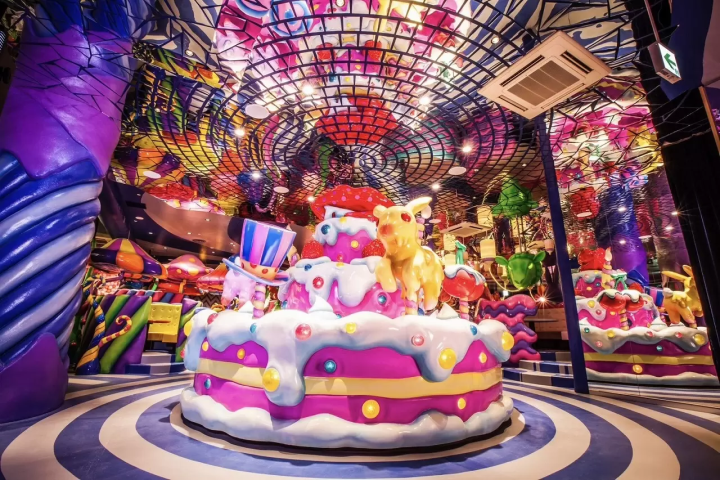
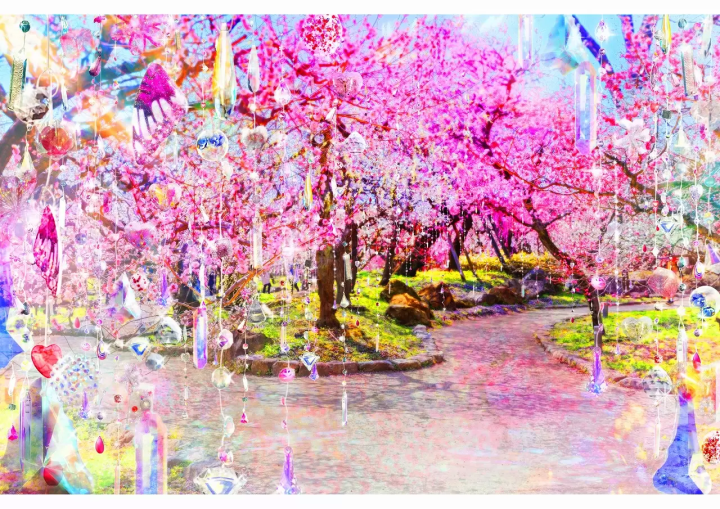
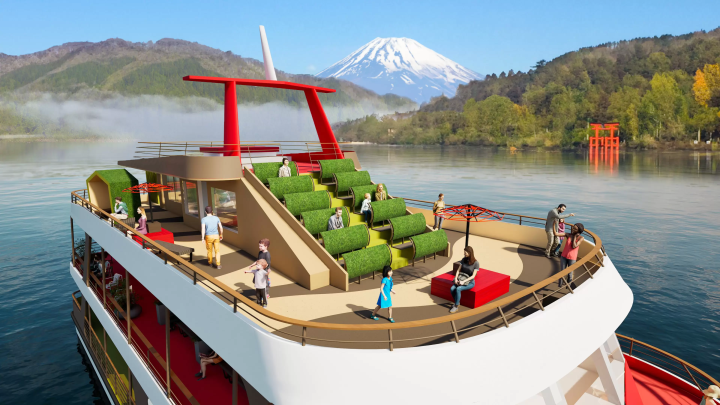

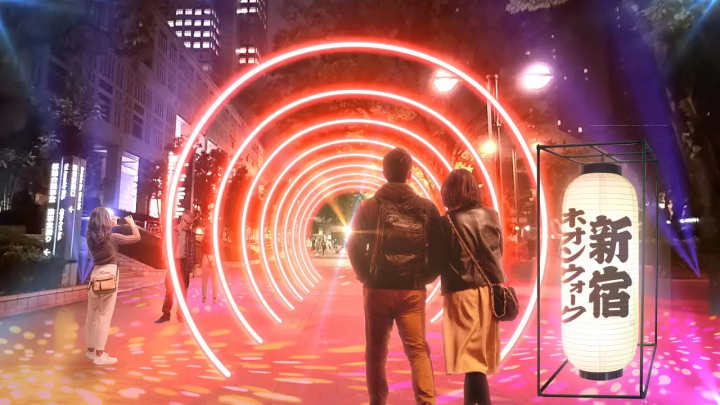



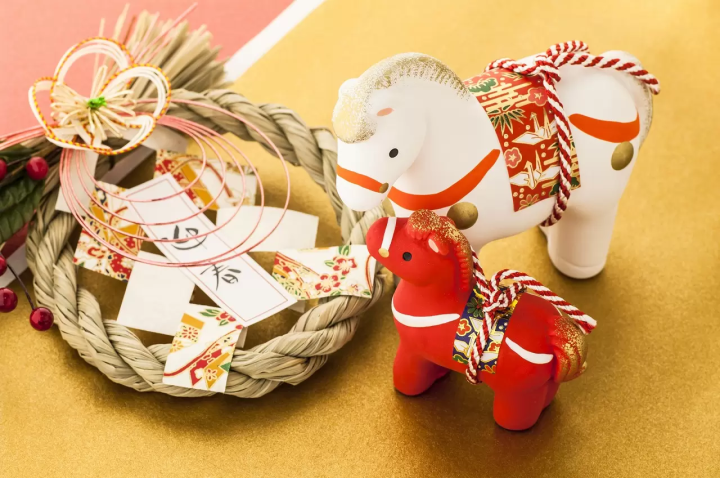


![[2026] Top 5 Strawberry Picking Spots in Tokushima, Naruto| Farms and Access Guide for January to May](https://resources.matcha-jp.com/resize/720x2000/2025/03/06-227165.webp)


